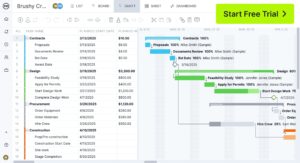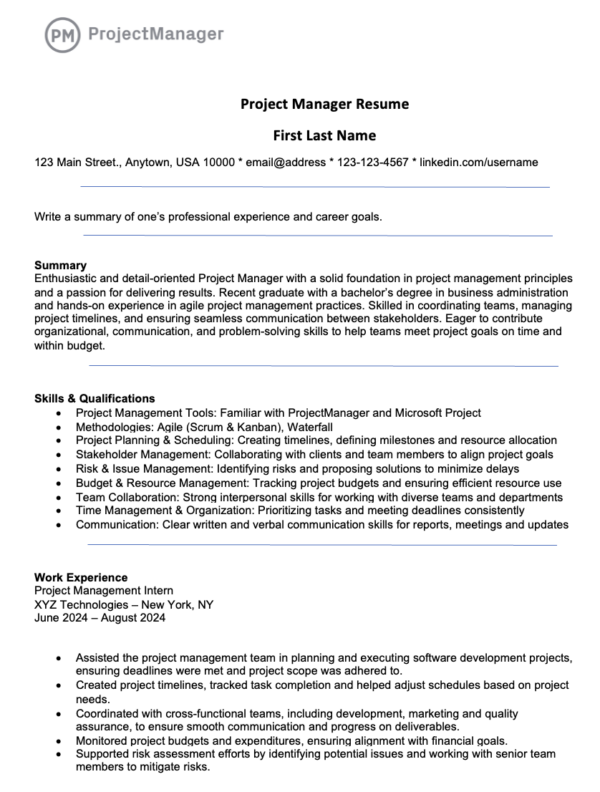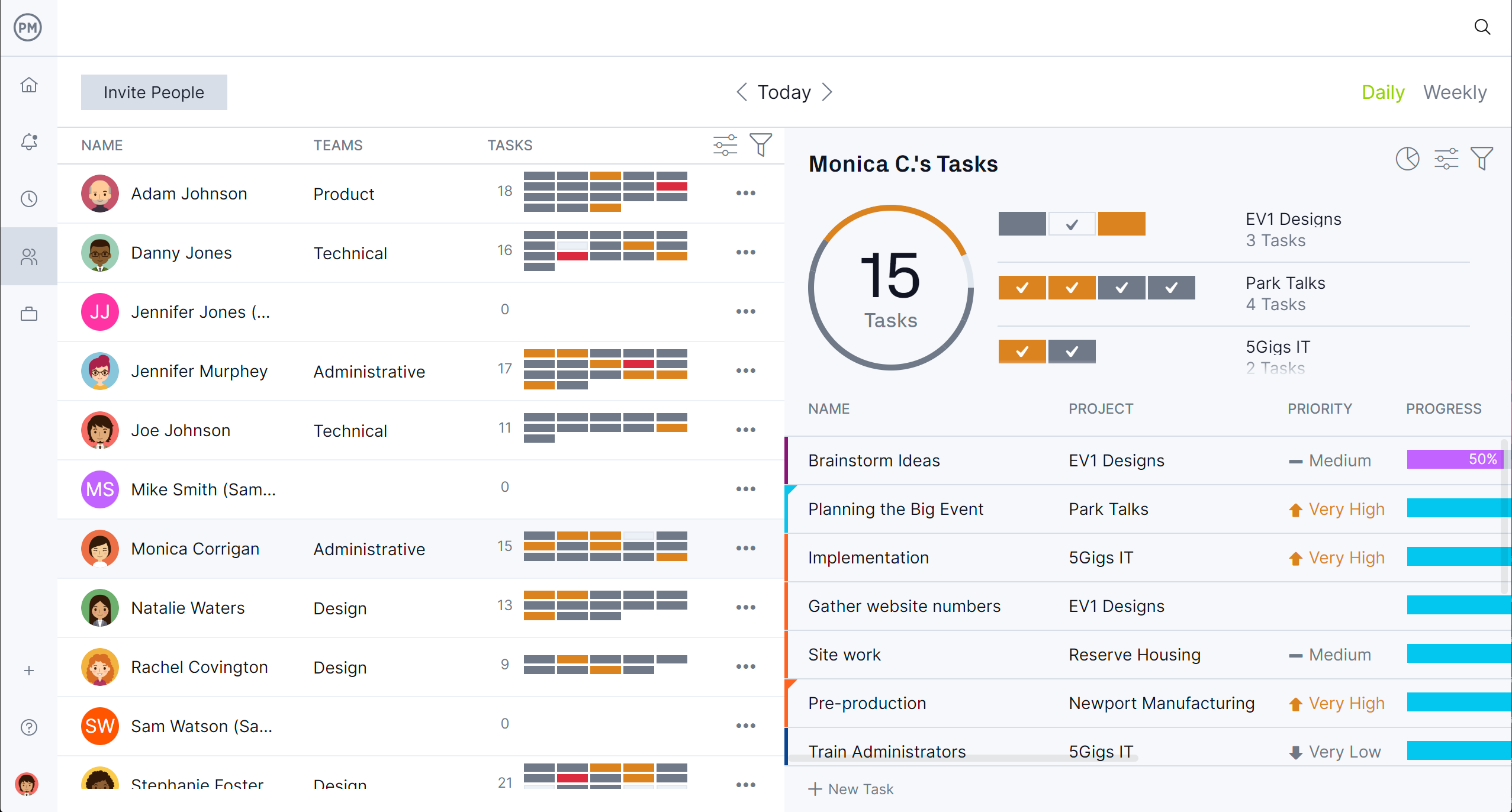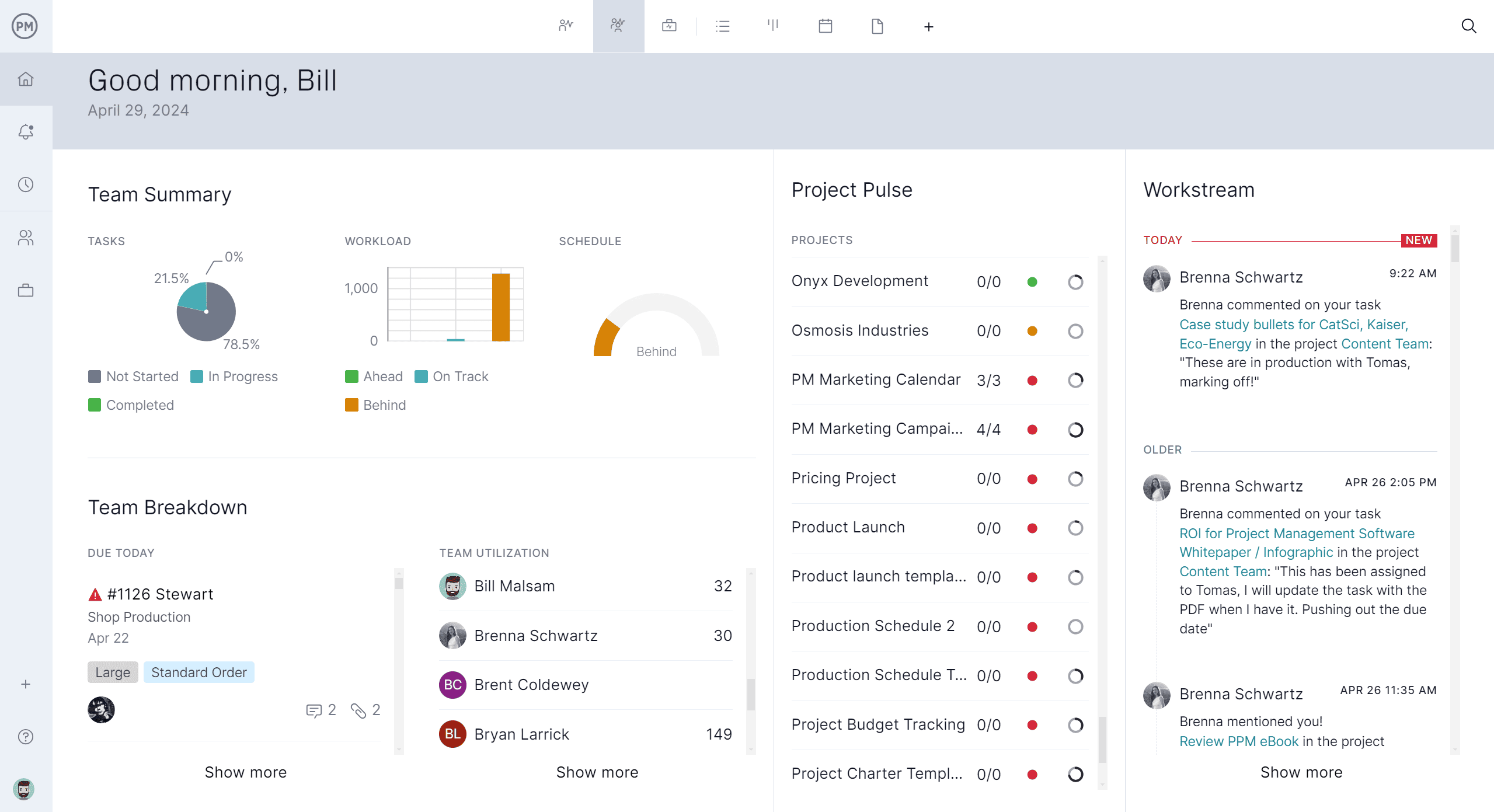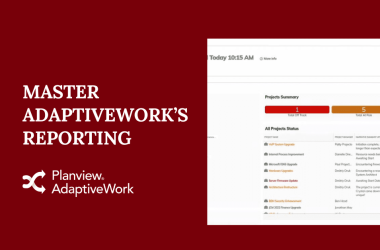Becoming a project manager is one of the most rewarding and in-demand career paths today. It’s a profession where leadership meets strategy, and it’s gaining traction fast—recruiters around the globe are actively seeking individuals who can drive projects to completion and adapt to change. Despite economic uncertainty, how to become a project manager remains a top question as demand continues to grow across industries from construction to tech to healthcare, according to a recent article in The Times.
If you’re wondering how to become a project manager, you’re in the right place. Over the next few sections, we’ll define the profession, explain what a project manager does and list the steps and credentials that help open doors. Whether you’re transitioning from another field or starting with little experience, understanding how to become a project manager effectively means positioning yourself with both practical skills and strategic awareness—starting now with a clear roadmap for where to focus.
What Is a Project Manager?
A project manager is the person responsible for leading a team toward the successful completion of a project’s goals. They coordinate schedules, manage resources and keep the project aligned with its objectives. If you’re learning how to become a project manager, you’ll quickly see that the role demands the ability to plan strategically, adapt to changes and communicate effectively across all levels of an organization. Their leadership is critical for keeping everything moving in the right direction while balancing time, budget and quality.
Project managers also serve as the link between stakeholders and the team, translating high-level goals into actionable plans. Those exploring how to become a project manager often discover it’s a balancing act between managing people, overseeing tasks and anticipating risks before they become problems. It’s a role that requires both soft skills, such as negotiation and motivation, and hard skills, like scheduling and resource allocation.
Project management software gives project managers the tools to oversee every part of a project from one platform. They can create schedules, track progress, manage resources and facilitate team collaboration in real time. This centralized system ensures projects stay organized and information flows smoothly between all stakeholders.
ProjectManager’s Gantt chart is an essential tool for anyone wanting to succeed after learning how to become a project manager. It offers a clear visual timeline that maps out tasks, dependencies and milestones, making it easier to manage even the most complex projects.
With drag-and-drop scheduling, color-coded task bars, resource tracking and real-time updates, project managers can keep teams aligned and adapt instantly to any change—ensuring projects finish on time and within budget. Get started with ProjectManager today for free.
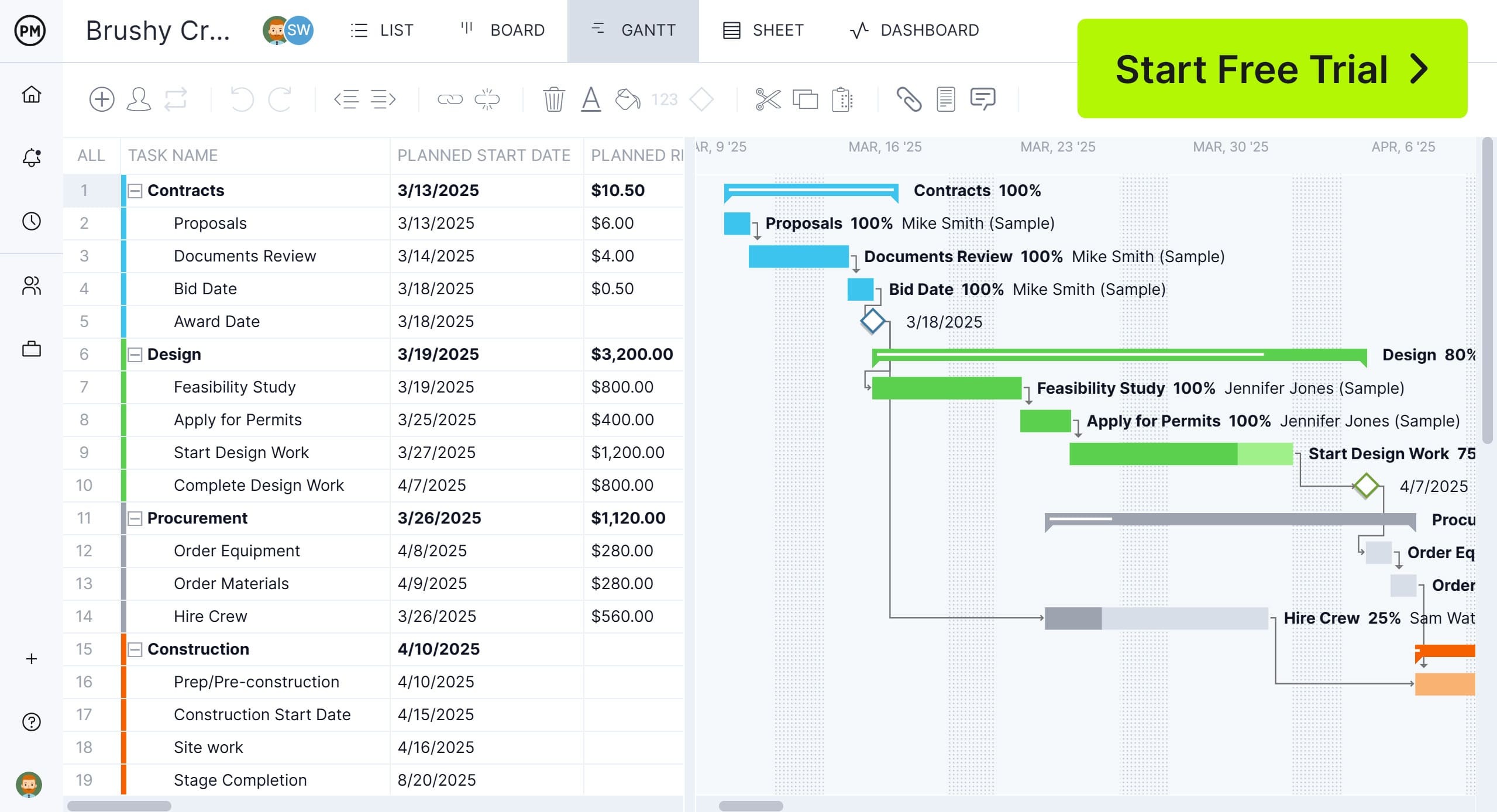
What Does a Project Manager Do?
A project manager is responsible for planning, executing and closing projects while ensuring they meet the agreed goals, budget and deadlines. They define the project scope, break it down into tasks, assign responsibilities and manage resources to keep everything running smoothly. Throughout the process, they monitor progress, identify and address risks and make adjustments when challenges arise.
They also act as the central point of communication between stakeholders and the project team, ensuring everyone stays informed and aligned. This involves facilitating meetings, preparing progress reports and resolving conflicts that could slow down the work. In essence, a project manager keeps all moving parts working together toward a common goal.
How to Become a Project Manager
If you want to learn how to become a project manager, start with a clear plan and steady progress. The path combines education, hands-on experience and continuous skill building to prepare you for the responsibilities of leading teams and delivering results.
Below are practical steps to guide your journey toward a project management career. Each step includes focused actions you can take to move closer to an entry-level role and beyond.
1. Decide What Industry You’d Like to Work in
Choosing an industry helps you target your learning and experience so your resume speaks directly to employers. Consider industries like construction, tech, healthcare or finance and research the typical project types, common tools and required certifications. Network with professionals in the field and ask about day-to-day responsibilities.
Aligning your interests and strengths with an industry increases your chances of landing a role and accelerates understanding of domain-specific risks, regulations and stakeholder expectations as you learn how to become a project manager.
2. Obtain a Bachelor’s Degree or Associate’s Degree in Your Field
A relevant degree lays a foundation in subject matter knowledge and demonstrates commitment to employers. Degrees in business, engineering, information technology or construction management are common starting points. If a full bachelor’s is not feasible, consider an associate’s degree or targeted coursework that builds technical competence.
Many hiring managers look for a combination of education and experience when assessing candidates for entry roles. Use your studies to build analytical thinking, communication skills and basic project planning abilities that support your goal of how to become a project manager.
3. Get Work Experience in Your Field
Hands-on experience helps you understand real project dynamics and gives you examples to discuss in interviews. Seek roles that expose you to planning, coordination or execution, such as coordinator, analyst or junior engineer positions. Volunteer for internal projects or cross-functional teams where you can practice scheduling, status reporting and stakeholder communication.
Track accomplishments and lessons learned so you can show measurable impact. Practical experience makes your transition smoother when you pursue roles specifically focused on how to become a project manager.
4. Obtain an Entry-Level Project Manager Certification
Entry-level certifications boost credibility and show hiring managers you know foundational practices. Options include certified associate in project management CAPM or similar entry credentials from reputable organizations. These programs teach key concepts in scope management, scheduling, risk and communication.
Studying for certification also prepares you for interview questions and practical scenarios. Earning a credential demonstrates initiative and makes it easier to compete for junior project roles as you follow your plan for how to become a project manager.
Related: 38 Project Management Excel Templates and Spreadsheets
5. Learn to Use Project Management Software
Proficiency with tools like Gantt-based planners, kanban boards and timesheet systems is expected in most roles. Learn common platforms for planning, scheduling, resource management and reporting. Practice building timelines, assigning tasks and generating simple reports.
Familiarity with software speeds onboarding and shows you can translate plans into executable schedules. Employers appreciate candidates who can use tools to improve efficiency. Investing time in software skills supports your effort to learn how to become a project manager and manage work effectively from day one.
6. Apply for an Entry-Level Project Management Role
Start applying for coordinator or junior project roles that offer exposure to full project lifecycles. Tailor your resume to highlight relevant tasks such as scheduling, meeting facilitation, status reporting and document control. Use your network referrals and targeted job boards to find openings.
Prepare interview stories that demonstrate organizational leadership and problem-solving. Entry roles build practical experience and open opportunities for promotion. Treat each interview and assignment as a step toward your goal of how to become a project manager and growing within the discipline.
7. Get Experience in Project Management
Once you land an entry role, seek increasing responsibility by managing small projects or workstreams. Volunteer to lead pilot initiatives or take ownership of deliverables. Track metrics such as on-time delivery, cost variance and stakeholder satisfaction that show your impact. Request feedback from mentors and document improvements you implement.
This hands-on experience builds the confidence and track record you need to move into formal project manager roles. Continuous practice is central to mastering how to become a project manager in any industry.
8. Obtain a More Advanced Project Manager Certification and Training
Advanced certifications like PMP or PRINCE2 demonstrate mastery of standardized methodologies and often increase marketability. These programs require documented experience and a deeper study of processes such as risk management, procurement and quality assurance. Continuous training in leadership, negotiation and financial management also strengthens your skillset.
Employers value certified candidates for senior roles because the credentials show both knowledge and commitment. Pursuing advanced certification is a major milestone on the path of how to become a project manager.
9. Further Develop Project Manager Skills
Focus on soft skills such as communication, negotiation, conflict resolution and stakeholder management alongside technical skills like estimating and scheduling. Practice leading meetings, facilitating decisions and motivating teams under pressure. Learn budgeting, forecasting and performance reporting to support strategic decisions.
Seek mentorship and take courses in leadership and change management. Building a strong, balanced skillset prepares you for the complexities of real projects and advances your progress on how to become a project manager.
10. Build a Professional Network
Networking exposes you to job leads, mentors and best practices from experienced peers. Attend industry meetups, conferences and local chapters of professional bodies to grow connections. Participate in online forums or contribute to project management communities by sharing case studies or lessons learned.
Strong relationships often lead to referrals and collaborative opportunities that accelerate career growth. A broad active network is a practical tool for learning and advancement as you pursue how to become a project manager.
11. Apply for a Senior Project Manager Position or PMO Director Role
Once you’ve built experience, certifications and a track record of delivered projects, start pursuing senior roles that involve larger budgets, complex stakeholder groups and strategic responsibilities. Tailor your applications to showcase leadership accomplishments, portfolio metrics and examples of successful risk mitigation.
Consider roles in a project management office PMO where you can shape standards, coaching and governance. Senior positions represent the culmination of the steps above and reflect your readiness to lead larger initiatives as a professional project manager.
Project Manager Resume Template
Download this free project manager resume template for a professionally structured Word document tailored for showcasing project management experience, skills and certifications. It comes complete with example formatting for entry-level and senior roles, making it easy to customize contact information, a compelling summary, highlighted qualifications and relevant work history.
Beyond formatting guidance, the template emphasizes strategic use of keywords for applicant tracking systems, recommending terms like project scheduling, risk management, stakeholder management and project monitoring.
Free Templates to Help You Become a Project Manager
There are more free project management templates available to help you become a project manager. Out of the over 100 free project management templates we offer for immediate download, these three below help project managers do their jobs more efficiently.
Project Plan Template
Download this free project plan template to outline the essential components of a project, such as objectives, scope, tasks, schedule, resources and deliverables. It provides a structured framework so teams can quickly organize their work, assign responsibilities and set timelines without starting from scratch. By standardizing how information is presented, a project plan template helps ensure clarity, consistency and alignment among stakeholders, making it easier to track progress and manage projects efficiently from initiation to completion.
Project Budget Template
Use this free project budget template to plan, organize and track the financial aspects of a project. It includes sections for estimated and actual costs, expense categories and budget variances. By providing a clear structure, a project budget template helps project managers allocate resources effectively, monitor spending in real time and avoid cost overruns. This ensures better financial control, improves transparency for stakeholders and supports informed decision-making throughout the project lifecycle.
Gantt Chart Template
This free Gantt chart template helps plan, schedule and track project tasks over time. It visually maps tasks as horizontal bars along a timeline, showing start and end dates and durations. By using a Gantt chart template, project managers can quickly organize work, identify overlaps or gaps and adjust schedules as needed. It streamlines planning, improves team coordination and provides a clear visual representation of project progress for both managers and stakeholders.
ProjectManager Is Ideal for Entry-Level and Experienced Project Managers
ProjectManager is the preferred choice for those new to project management and seasoned professionals because it offers multiple project views that adapt to any workflow or management style. New project managers can start with a simple list view to organize tasks and deadlines, while experienced managers can leverage Gantt charts for detailed planning and dependency tracking.
The kanban board view makes it easy to visualize work in progress and the calendar view helps align team schedules with upcoming deadlines. This flexibility means project managers can switch between views without losing data, making it easier to manage projects of any size or complexity.
Optimize Resource Allocation
Our powerful resource management tools allow project managers to see resource allocation in real time, identify over- or underutilized team members and make adjustments before delays occur. Color-coded workload charts make it easy to spot bottlenecks, while the team page gives a clear overview of availability.
Whether you’re coordinating a small team or managing multiple departments, these tools ensure resources are distributed efficiently, costs are controlled and workloads are balanced to keep the project on track.
Track Progress in Real Time
Robust real-time dashboards and customizable reports give project managers instant insight into progress, budgets and performance. Secure online timesheets help track billable and non-billable hours accurately, while milestone tracking keeps everyone aligned on critical deadlines.
With the ability to share live project data with stakeholders, managers can make faster, more informed decisions and maintain transparency throughout the project lifecycle. These tracking features not only help meet deadlines but also improve accountability and overall project success.
Related Project Manager Content
There’s a lot more to how to become a project manager. Below are some links to recent articles about how to create a thorough job description, different project management titles and much more.
- Project Manager Job Description & Free Examples
- Project Manager Titles – A Quick Guide
- Program Manager vs. Project Manager: Key Differences
- Best 30 Project Manager Interview Questions and Answers
ProjectManager is online project and portfolio management software that connects teams, whether they’re in the office or out in the field. They can share files, comment at the task level and stay updated with email and in-app notifications. Join teams at Avis, Nestle and Siemens who are using our software to deliver successful projects. Get started with ProjectManager today for free.
The post How to Become a Project Manager (And Get a Job) appeared first on ProjectManager.
